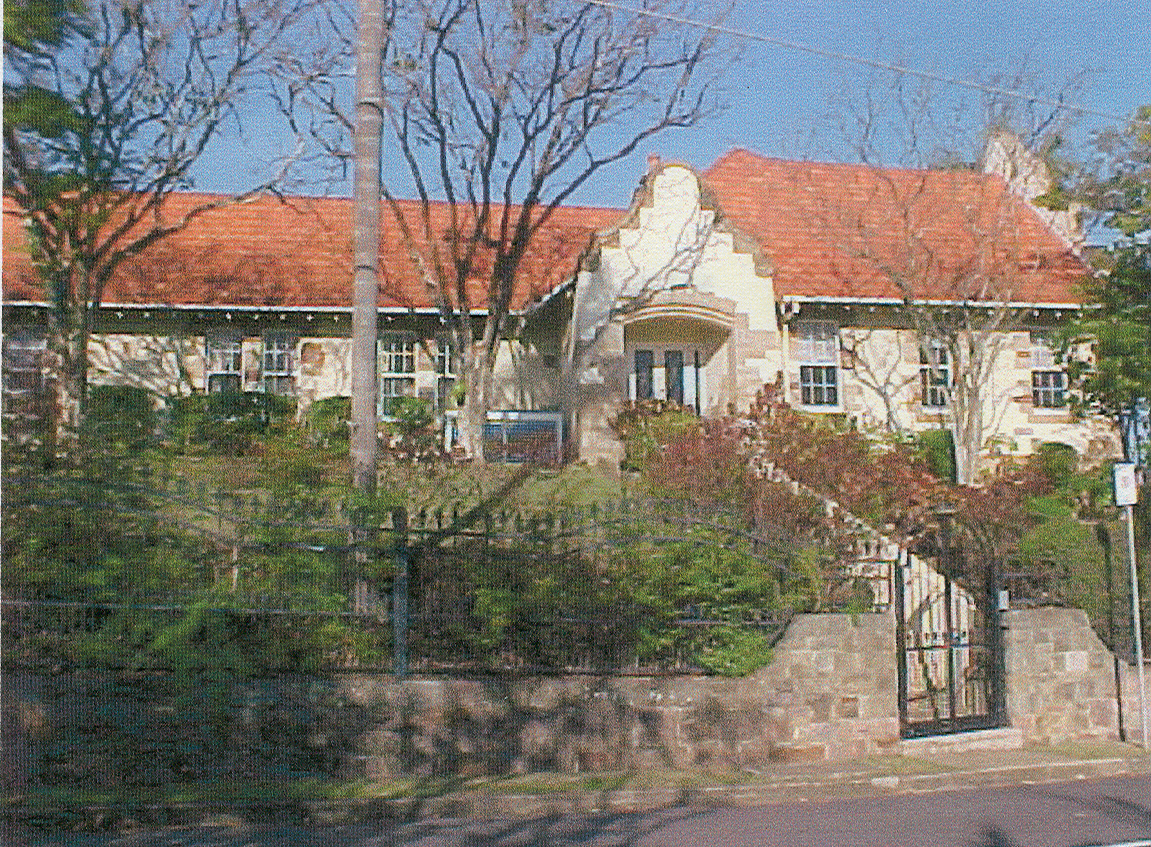Addresses
Type of place
House
Period
Interwar 1919-1939
Style
Anglo-Dutch
Addresses
Type of place
House
Period
Interwar 1919-1939
Style
Anglo-Dutch
This masonry and tile house was built in 1931 by architectural firm Powell and Rae as the home of well-established Brisbane builder George Stronach. Sited on Eldernell Hill at Hamilton with views of Hamilton Reach and the Brisbane CBD, this Dutch Colonial-influenced house is an aesthetically-pleasing example of their work.
Lot plan
L4_RP166869
Key dates
Local Heritage Place Since —
Date of Citation —
Construction
Roof: Terracotta tile;Walls: Masonry
People/associations
Lange L. Powell and George Rae (Architect)Criterion for listing
(E) Aesthetic; (H) Historical associationInteractive mapping
Lot plan
L4_RP166869
Key dates
Local Heritage Place Since —
Date of Citation —
Construction
Roof: Terracotta tile;Walls: Masonry
People/associations
Lange L. Powell and George Rae (Architect)Criterion for listing
(E) Aesthetic; (H) Historical associationInteractive mapping
History
This masonry and tile house was built in 1931 by architect firm Powell and Rae as the home of master-builder George A. Stronach. Stronach constructed the AMP Building, also known as Macarthur Chambers, on the corner of Queen and Edward Streets in the early 1930s.
The site of ‘Euralla’ was excised from the grounds of ‘Eldernell’, the home of William Hemmant and family built on the highest point of a ten acre block of land sloping from Windermere Road to Kingsford Smith Drive (Eagle Farm Road), and purchased in 1868. The land holding was reduced by subdivision from 1890 onwards. ‘Euralla’ is set on almost 3000 sqm (two roods, thirty-five and one tenth perches) directly below ‘Eldernell’ or ‘Bishopsbourne’ as it is now called. Stronach purchased the land in 1930 and thereafter commissioned Powell and Rae to design a house for him. An illustration of ‘Euralla’ appeared in the May 1932 edition of Building Magazine with an article about the architects.
Architects Lange Leopold Powell and George Rae were in partnership for only two years (1931-33) but their association pre-dated this as Rae was employed as Powell’s articled pupil from 1919 to 1922, and later his chief draftsman then associate. Powell was a well-known Brisbane architect whose list of notable architectural work is extensive. His commercial buildings still standing include Perry House (1910), St Martin’s War Memorial Hospital (1921), Ballow Chambers (1924), BAFS Dispensary, George Street (1925), Woolworths Building, Queen Street (1926), BAFS Dispensary, Woolloongabba (1930) and the Masonic Temple, Ann Street (1930). He was also responsible for a number of residences in south-east Queensland between 1913 and 1934.
In 1937, Stronach sold the house and it has been resold a number of times. The Brisbane City Council has approved alterations to ‘Euralla’ in 1963, 1980 and 1981. An application in 1971 to erect a multiple dwelling on the site was refused after the receipt by Council of a number of objections.
Description
This inter-war bungalow draws its influences from the Dutch Colonial style and other bungalow styles e.g. twin Romanesque windows in main south-facing gable, distinctive irregular sandstone quoining and window architraves.
It is constructed in brick with brick piers to support the timber floor. The western (front) and southern elevations have stone plinths, sills and gauged flat arches over the double hung windows. The walls have a white stucco finish. The remaining elevations have concrete plinths and sills. A few amber bricks are among the stone work surrounding the windows.
The tiled roof abuts shaped parapets (based on Dutch Colonial and Cape Dutch gables) to the gable ends. The main gable is located on the southern elevation. A long flight of concrete steps, with terraces on either side, leads to the tiled entrance porch on the western elevation.
Statement of significance
Relevant assessment criteria
This is a place of local heritage significance and meets one or more of the local heritage criteria under the Heritage planning scheme policy of the Brisbane City Plan 2014. It is significant because:
References
-
Brisbane City Council Building Cards
-
Brisbane City Council Water Supply and Sewerage Detail Plans
-
Department of Natural Resources, Queensland Land Titles
-
Kerr, Margaret F., “Lange L. Powell, architect”, Thesis (B. Arch), University of Queensland, 1957
-
Job, William, The Building of Brisbane 1828-1940, Brisbane, University of Queensland Press, 2002
-
Queensland Heritage Register, Environmental Protection Agency - MacArthur Chambers entry, at http://www.epa.qld.gov.au/projects/heritage /index.cgi?place=600147&back=1, accessed 30 May 2006
-
The Architecture & Building Journal 1931
-
Watson, Donald and Judith McKay. A Directory of Queensland Architects to 1940. (St. Lucia: U of Q Press, 1984)
Citation prepared by — Brisbane City Council (page revised September 2020)
